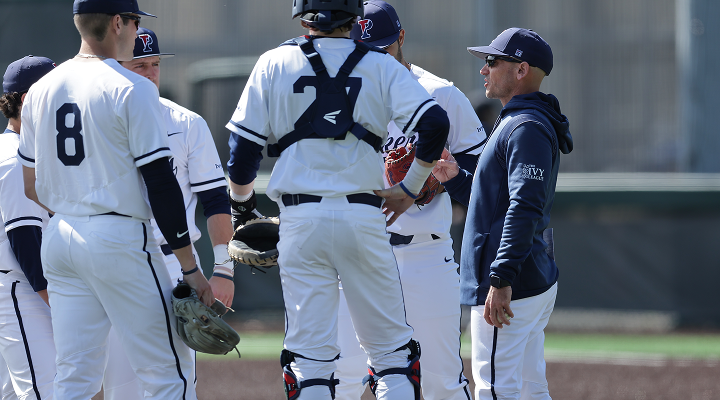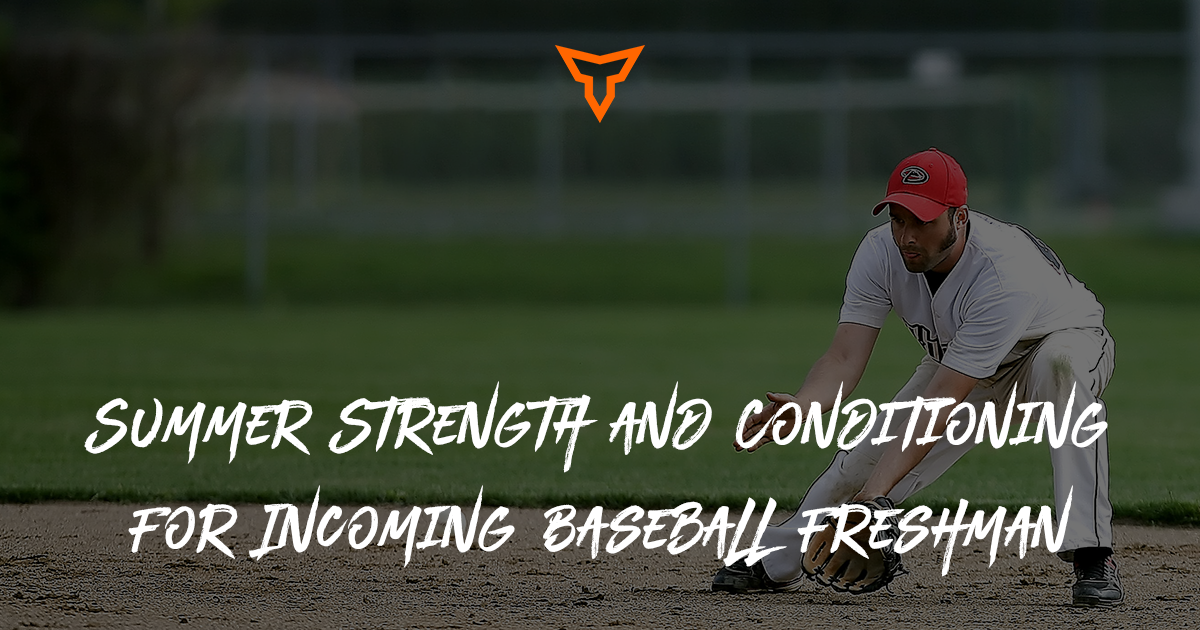Disclaimer: the thoughts, opinions, and ideas expressed in this post are not representative of my current employer’s beliefs, nor do they reflect those of my former employers.
“You can have baseball, I don’t want them; never could understand my baseball teams.” - Real words from a collegiate strength coach to an intern
Baseball is an enigmatic sport; while it is relatively low-impact (it does not possess the collisions of football), it certainly has its share of considerations that make the training process for the sport quite complex.
For this reason, baseball players can often be hard to work with for those who have not been indoctrinated into the culture of the sport. This isn’t a condemnation of the baseball player population, but rather a reality of working in a sporting culture that, overall, is quite a few years behind the other major sports in terms of performance training.
The integration of strength and conditioning into the baseball world has been slow and is still incomplete; to this day I continue to hear an assortment of players, coaches, and parents echoing the obsolete stigma that ballplayers will get hurt if they strength-train, or that they might get too big and bulky to play if they begin using resistance training.
Thus, strength training for baseball players can often be a challenge in the weight room. Too aggressive for some, and your program is labeled “a football-type workout”, yet less aggressive may leave much to be desired in terms of progression, both undesirable outcomes.
Some strength coaches working in the high school or collegiate setting may tend to shy away from working with baseball. While this sport can be challenging at times, a coach armed with the knowledge of what makes the demands of baseball different than other sports (and in the many ways the demands are not much different at all) can build enough trust with his or her players to earn their buy-in. Thus, the purpose of this series is to provide a high school or collegiate coach - one who may not possess a large knowledge-base of the demands of baseball - with the information necessary to positively impact their team with an effective baseball weight training program.
Sport-Specific Training
Spend any time around a ball-field or near amateur players and it won’t take long for you to hear the phrase “sport-specific training”. While there are certainly grounds for parents, players, and coaches to want sport-specific training (in reality, all strength and conditioning professionals aim to create training that considers the uniqueness of their sport), often times these same people misunderstand what that actually means, which can lead to skewed expectations for training.
It is vital, though, to understand that sport-specific training is not simply mimicking the actions of the sport under loading. Rather, it is providing training that takes into consideration the demands of the sport.
Just as with any sport, the overall athlete should be developed first, and baseball should be no different. Where baseball, as a sport, does deserve its own individualization is in how the program accommodates the demands of the sport.
While not a collision sport, baseball does, in fact, require some of the fastest joint movements that the human body can possibly exert. The pitching motion, in fact, involves shoulder-joint internal rotation speeds that exceed any other angular velocity that the body is capable of producing. Hitting, throwing, and pitching all require violent rotational movements. What’s more, the sport requires that these violent movements be performed repetitively; hitters take many max-effort swings per game, and many sub-max swings to warm-up, and exponentially more in practice each day; pitchers can throw upwards of 100 competitive pitchers per game or spread out over the course of several successive days, and many more “tosses” in warm-ups, and even more still during practice.
Repetitive actions such as the throw and swing, alone, can lend themselves to a predisposition for chronic injury in the arm, shoulder, and back, among other regions. Combine this with the violent nature of the actions of baseball and you can surely understand why a ballplayer’s body may feel abused despite such little physical contact. A strength coach or high school coach should consider these demands when developing a strength-training program for baseball players.
It isn’t that baseball players are fragile or should be treated as such. Rather, a baseball training program should simply aim to avoid exacerbating any of the microtrauma incurred from the sport itself or adding to the chronic loads already experienced on the field.
After all, strength-training is just a component (one of many) of the athletic development system, a system that is ultimately there to support the sport itself - baseball.
Thus, any training that counteracts or holds the potential to impose on the game itself is just nonsensical; to be so steadfast as to hold onto a specific training method/exercise/program that poses a significant risk to the athlete’s performance is to go against what is best for the athlete.
So, what constitutes an exercise or program that would be less sound practice for a ballplayer? As coaches, we are constantly evaluating and managing risk vs. reward, and certainly, anything that significantly risks impeding healthy performance would be inadvisable.
Red Flag Considerations For Training The Baseball Player
1. Anything that causes pain or symptoms
This should be a general rule for any training, regardless of sport, and it is probably all too obvious. But, anything that causes pain in the hand, elbow, and shoulder - heck, anywhere in the body - should immediately be discontinued or in the very least re-evaluated.
2. Anything with a high potential for turning the asymptomatic into the symptomatic
A joint may be pain-free, but that doesn’t mean that it is pathology-free. Remember the wear and tear that your ballplayers are putting their shoulders and elbows through; just like the lifetime runner who doesn’t feel knee pain until they change something (e.g. shoes or running volume) a thrower or hitter may not experience pain until something causes those chronic adaptations to become painful or irritant.
This is actually the basis for my own personal feelings on the subject of overhead pressing/lifting for the baseball player. It isn’t that it is inherently bad, it is just: a) players typically can’t get in the proper position to perform it correctly (and without possibly putting other joints in compromising positions), b) a seemingly healthy shoulder may, in fact, possess dysfunctions, and a dysfunctional joint under repetitive loading is a bad equation. Both point “a” and “b” can quickly turn an asymptotic joint(s) into symptomatic.
3. Anything that mimics the throwing or hitting action without a sound physiological/programming basis
Mimicry for mimicry’s sake is just as irrational as variety for variety’s sake. The only difference is that putting a ballplayer through more (and possibly loaded) repetitions of the already overused baseball movements is only adding to the chronic volume accumulated through the sport. And, while you may say that, “This is the off-season, they aren’t playing at much”, consider the climate of amateur baseball: ballplayers play year-round. I personally grew up in baseball during a time when travel-ball was only beginning to surge. As a result, I only played one summer on the showcase-circuit. Yet, I still can’t remember any significant span of time during my adolescent years when I put the baseball down for more than a few weeks at any one time. Now, today, travel-ball has become the norm for ages as young as 10 and 8.
If you want to use exercises or movements that closely resemble the throwing or hitting motion (e.g. a medicine ball throw), you can. I am in no way discouraging the use of rotational movement or throwing in performance training, I am simply imploring you to have a justification for it.
Considerations To Include In Programming For A Baseball Player
1. Anything that develops the total athlete first, and does so safely and effectively
Quite simply, what is good for overall athleticism tends to be good for the ballplayer as well. This means safe, thoughtful, progressive, and multiplanar training that considers the individual development needs of the athlete and person. If you’re striving to do this, then I would say you are doing a great service to your ballplayer already.
2. Anything that produces positive adaptations for the sport or that counteracts negative adaptations from the sport
With the great eccentric forces that are produced in order to decelerate the throwing arm and the trunk during the throwing motion, the body begins to adapt by losing and gaining ranges of motion in particular joints. While some adaptations are a potentially necessary mechanism by the body to best cope of the stresses of the violent action (e.g. a degree of humeral retroversion is thought to be necessary for significant pitching velocity, and possibly even protective for the arm), others are more transient and can be addressed and managed from season to season.
For example, a pitcher experiencing a loss of scapular upward rotation and glenohumeral internal rotation over time, or the changes in hip rotation over the course of a season. Training that seeks to restore scapular upward rotation or hip rotation mobility would then be an appropriate means to counteracting some of the adaptations that occur as a response to the sport - adaptations that, left unchecked, can ultimately lead to issues down the road.
Conclusion
I am sure that many people would prefer to have a black and white checklist of “what to do” and “what not to do” with ballplayers - believing that this would help “solve” debates such as olympic lifting for baseball, clarify popular conversation topics such as weighted baseballs, or make exercise selection easier. But, my opinions and thoughts are only those of one man and are born of only my own personal experiences as a coach. And, such absolutes simply do not take into consideration the diversity of players, coaches, and circumstances.
Thus, it is my hope that the above bullet points serve as lenses in which the amateur coach or strength coach can view the process of training baseball players; helping to make more thoughtful decisions on what is best for their athletes and circumstances. To think about training for baseball in terms of considerations - rather than restrictions - will hopefully enable the coach new to the baseball culture, rather than handcuff or frustrate them.
Subscribe to our blog
Subscribe to receive the latest blog posts to your inbox every week.
Related posts

Strength Training Baseball Players 101 - (Pt. 2)

Training Strength and Injury Prevention in Female Youth Soccer


